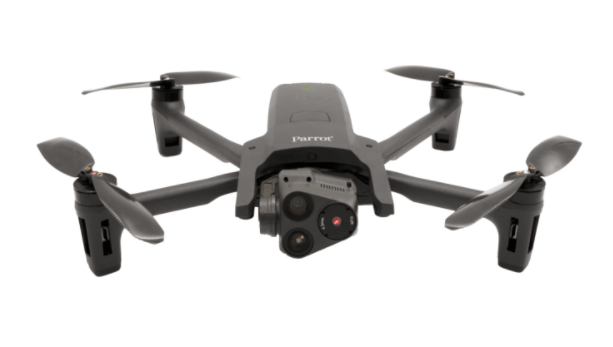
As we crystal gaze security challenges likely in 2021, it is appropriate to recall the major trends of last year. Despite the Covid pandemic, China blatantly altered the tenuous status quo on the LAC in utter disregard of agreed protocols. It also instigated a barbaric stand-off in Galwan using stone-age weapons. Yet, the year finished with a stalemate, with Indians in control of dominating features on the Kailash range. It is a settled principle that unresolved stalemate implies defeat for the aggressor. The moot questions remain – will the Chinese accept it? Before any face-saving exit, will the PLA attempt another foray, leveraging its much-trumpeted technological prowess? Is asymmetry, hyped up?
Another trend was the phenomenal success of drones in Nagorno Karabakh (NGK). Headlines exclaimed, “Azerbaijan’s drones owned the battlefield and defined the future of warfare.” Total decimation of platforms by armed drones has prompted relevant posers. First, is it the death knell for tanks and costly platforms? After all, nearly 250 AFVs and 200 other platforms were destroyed/degraded. Second, most of these engagements were recorded and beamed on Twitter, acting as exponential multiplier in the psychological domain, forcing Armenian capitulation.
Third, the cost-effectiveness of aircrafts is under scrutiny. Drones are achieving the same and more, at a fraction of the cost, without risk to pilots, though Azerbaijan dished out 69 million petrodollars for six systems. Pricing debate is best summed up in the words of Michael Korean, director, Russian Studies, CAN, “Drones offer small countries very cheap access to tactical aviation and Precision Guided Weapons, enabling them to destroy an opponent’s much costlier equipment such as tanks and AD system.”
Top guns and Tanks have certainly lost a bit of swagger. Fourth, it has raised serious questions on the efficacy of counter-drone systems like Armenia’s air defence systems such as Pantsir-A1and electronic warfare system, Krusukha, sourced from Russia. Fifth, at the macro level, it has highlighted asymmetrical advantages to the attacker in the offence-defence matrix. The traditional belief that wars are unlikely, as the cost of defending outweighs that of attacking, is under challenge.
Objective analysts counter this hype with the argument that the success of drones seen in NGK and other skirmishes (Syria, Libya and Yemen) cannot be applied universally, as a template.

These conflicts were characterised by near-total air dominance against irregular militia like forces. The abject surrender by Armenia was primarily due to antiquated AD armaments and more importantly, lack of coordinated AD control and reporting system. Azerbaijan employed slow AN-2 agricultural planes (converted as drones) as baits, luring Armenians to disclose their electronic AD profile. This enabled Israeli Kamikaze loitering munitions to literally demolish the entire Armenian AD network. Concurrently, Turkish, Bayraktar TB2 destroyed undefended platforms, arrayed in laager (harbours), seen only in historical movies.
Tanks leverage dispersion and damage template of conventional 20 KT strike predict losses of less than a squadron of tanks, with standard distances. Mechanised columns have integrated tracked AD platforms. Modern tanks incorporate Active Protection System (APS) like Shtora and Trophy, despite their high costs. Franz-Stefan Gady of the American think tank, IISS says, “Platforms, including tanks, will not become obsolete.” The USA is already working on Next-Generation Combat Vehicle (Optionally Manned Tank)-2030. However, platforms will have to incorporate better electronic signature suppression techniques, decoys and operate in defended envelopes. Chinese are leveraging psychological warfare to paint a scary scenario of overwhelming technological ascendancy.
Notable examples have been the story of the positioning of microwave oven type of devices, to literally vaporising troops on Kailash range. Another fable has been swarms of drones, flying noodles to PLA troops with the capability to deliver munitions. The more recent one is the supply of 50 Wing Loong II armed drones to Pakistan. These may have been provided with conditions to enhance security envelope of CPEC installations. The accompanying hype in Chinese media predicts that Indian troops will be sitting ducks. It will be prudent to debunk such attempts, aimed at cognitive manipulation as part of three warfare strategy. The aim is to trigger another psychological collapse, like the one witnessed in Armenia.
Chinese technology, especially in aerial weapons, though cheap and widely proliferated, has its share of serious hiccups. In 2011, China unleashed kind of a “supply shock,” selling drones to a large number of countries. Michael Horowitz of the University of Pennsylvania described this proliferation as “pursuit of status: synonymous with tech innovation.”
Algeria has had a series of accidents in the last six years with CH-4 UCAVs. Jordan had to put on sale Chinese supplied UAVs after they failed on all parameters. In the recent war in NGK, the only Chinese equipment was WM-80 MLRS on the losing side. Chinese UAVs are yet to prove their efficacy and reliability in contested environments. This appraisal notwithstanding, we should prepare for this inevitably promising weapon of the future, as both our adversaries are building potent capabilities.
Preparations have to be in both offensive and defensive domains.
We have a fairly functional AD control and reporting system, which should be tweaked. Indigenous initiatives on RF guns to distract incoming drones and anti-drone radar system developed by BEL, need fast-tracking. Inoffensive domain, our limited stock of Israeli Harop (Harpy-2) require urgent boost with induction of munitions, currently under the order. A project of arming of Herons needs to be expedited. After the conclusion of BECA, negotiations for armed MQ-9 drones from the USA should find greater traction.
With the induction of drones, forces need a technological upgrade, along with the review of inventories of air crafts and platforms. Drones should be the key focus for Atmanirbhar initiative. The biggest takeaway-Front line entities require better and organic air defence envelopes.

